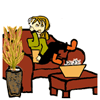Cellulitis: How long does it take to heal on legs?
Published in Health & Fitness
Cellulitis is an infection of the deep layers of the skin. It develops when bacteria enter through a cut, bite, or wound — including tiny breaks in cracked, dry skin. Common skin-dwelling bacteria, Staphylococcus or Streptococcus, are the usual culprits. Although cellulitis can occur anywhere on the body, the most common location is the lower leg.
Dr. Arash Mostaghimi, a dermatologist at Brigham and Women’s Hospital and associate professor of medicine at Harvard Medical School, weighs in on new research that explores important questions about how long it takes to fully heal.
What are the symptoms of cellulitis?
The body’s natural immune response to this bacterial invasion triggers a painful rash that appears red on lighter skin and dark purple on darker skin. The affected area also may be swollen and feel warm.
How is cellulitis treated?
The typical treatment is five to 10 days of antibiotic pills. More serious cases may require intravenous antibiotics.
How quickly can antibiotics help cellulitis resolve?
After starting antibiotic treatment, people usually notice improvement within a few days. However, the area may remain swollen, warm, and painful even after 10 days.
Does that mean the antibiotic treatment was ineffective? Not necessarily, according to a recent study of people with cellulitis in the lower leg that described the natural history of the healing stages following antibiotics.
“The healing process has two parts, which is why a full recovery takes longer than you might think,” says Mostaghimi.
First, the antibiotics and your white blood cells work together to kill the bacteria. But your body’s immune response against the bacteria may take a while to shut down. As a result, this second stage of the healing process may include some residual symptoms, he explains.
What did the study find?
The study included 247 people with mild to moderate cellulitis of the lower leg who received antibiotics for seven to 10 days. By day 10:
This pattern of discomfort isn’t unusual, especially with leg infections, says Mostaghimi. As people are recovering from leg cellulitis, they’re often advised to elevate the leg, which helps to ease the swelling. (Putting a warm, moist washcloth on the area may also help.)
But after they feel better and start walking more, fluid shifts back down into the legs. So it’s not surprising that the area might feel a little swollen and uncomfortable again once they’re back on their feet, he says.
Who is at greatest risk for cellulitis?
Remember, cellulitis typically occurs when bacteria normally present on our skin manage to breach that shield to enter the body.
Some people who develop cellulitis have no obvious injury or skin damage to explain the infection, which can occur in people who are generally healthy. However, people with certain health problems are more prone to cellulitis. This includes people who are overweight or have diabetes, a weakened immune system, poor circulation, or chronic edema (swollen limbs).
Additionally, skin conditions such as eczema and athlete’s foot can create small cracks in the skin that make it easier for bacteria to penetrate deeper into the skin, Mostaghimi says. Scratching a bug bite until it bleeds is another possible entry point for bacteria.
What happens if cellulitis goes untreated?
Untreated cellulitis can be very serious. The rash may spread, be surrounded with blisters, and become increasingly painful. Nearby lymph nodes may become tender and swollen, followed by fever and chills. Seek medical care right away if you experience these symptoms.
The bottom line
“It’s important for people with leg cellulitis to realize that it may take a bit longer after finishing your antibiotics for all of your symptoms to completely resolve,” says Mostaghimi. You’ll probably start to feel better within a few days, but always finish all the pills in your antibiotic prescription. However, having residual symptoms once you’re done does not mean you need another course of antibiotics or a different antibiotic, he says.
(Julie Corliss is executive editor of Harvard Heart Letter.)
©2024 Harvard University. For terms of use, please see https://www.health.harvard.edu/terms-of-use. Distributed by Tribune Content Agency, LLC.










Comments